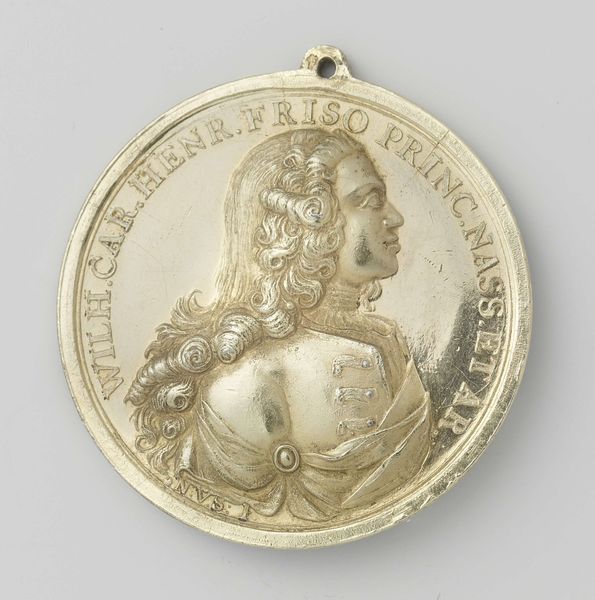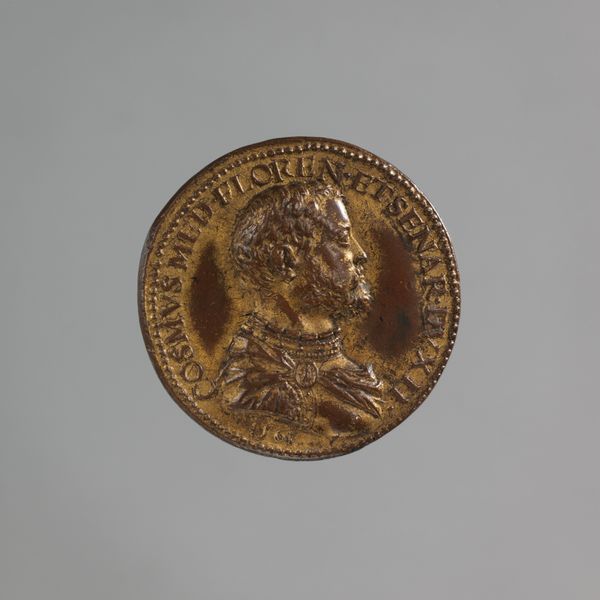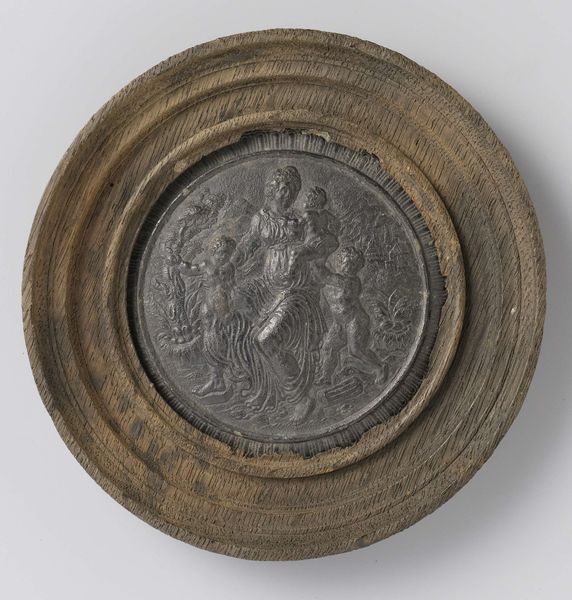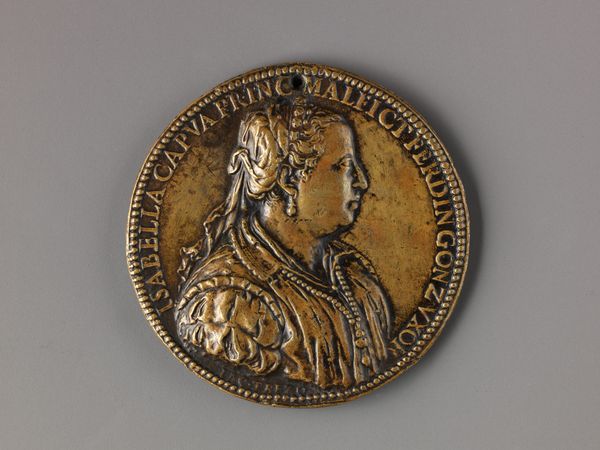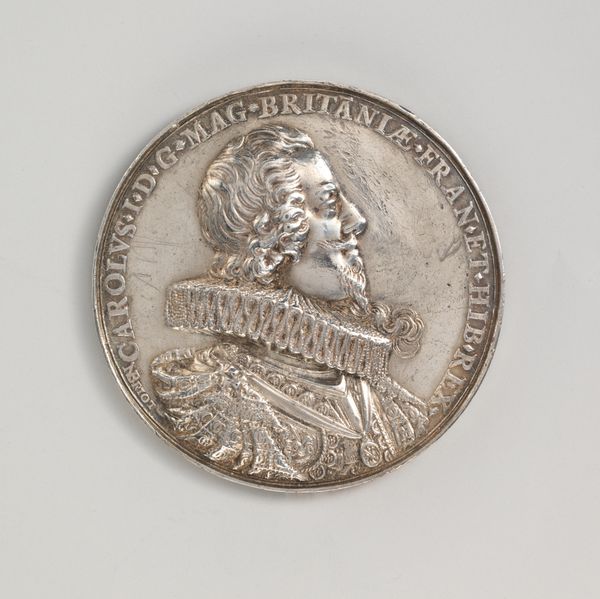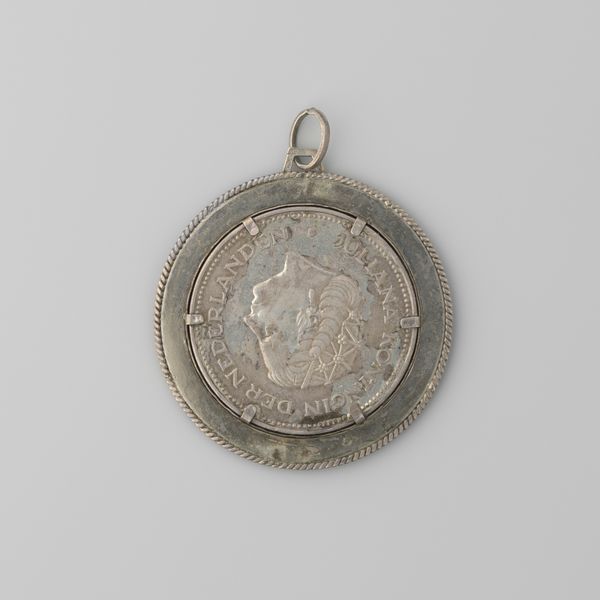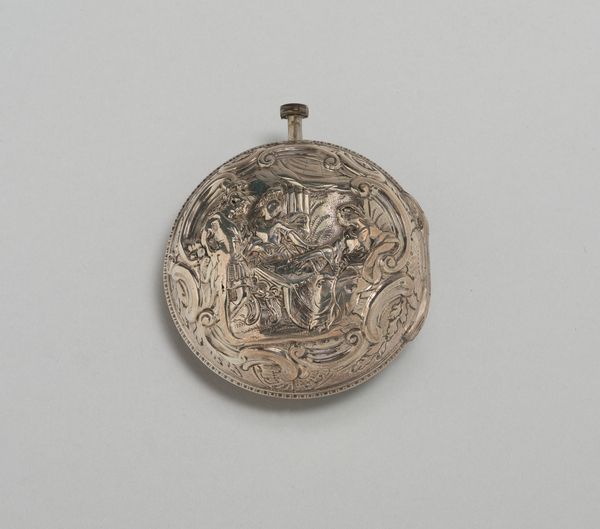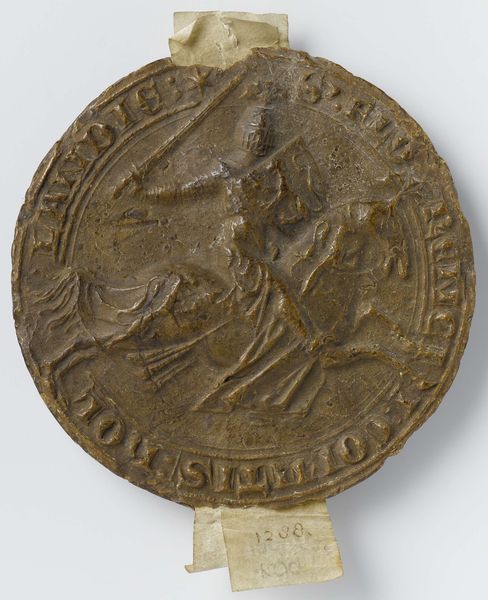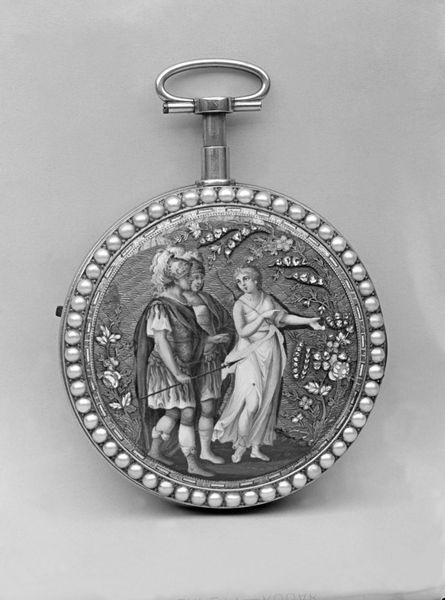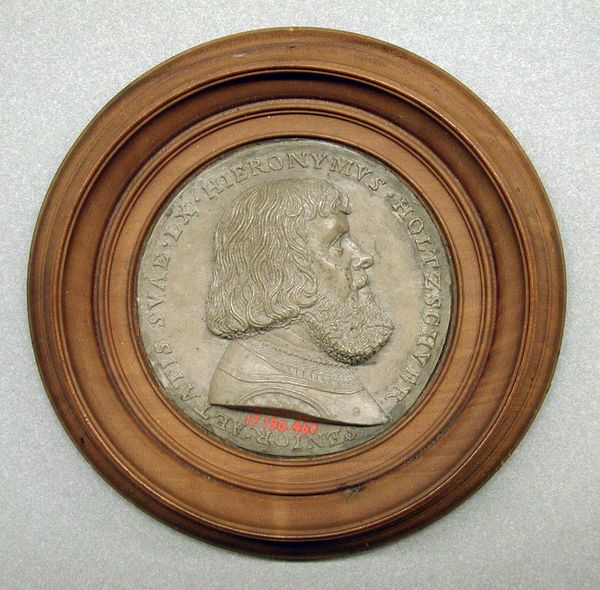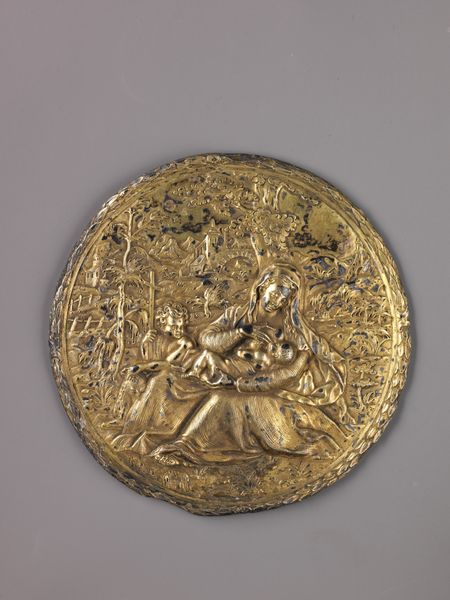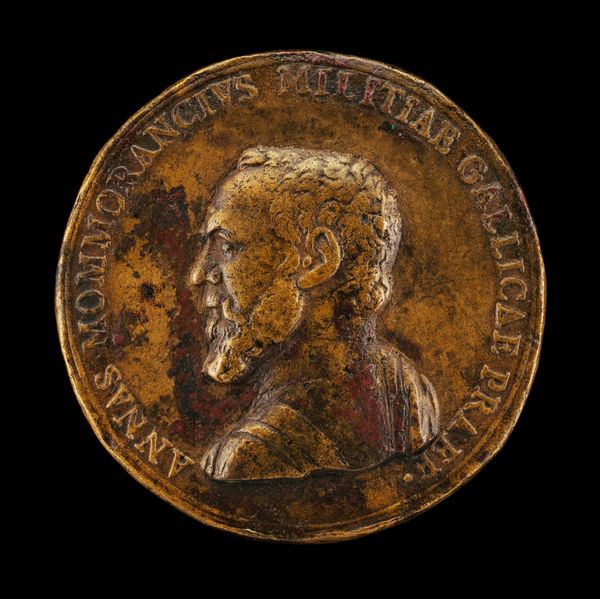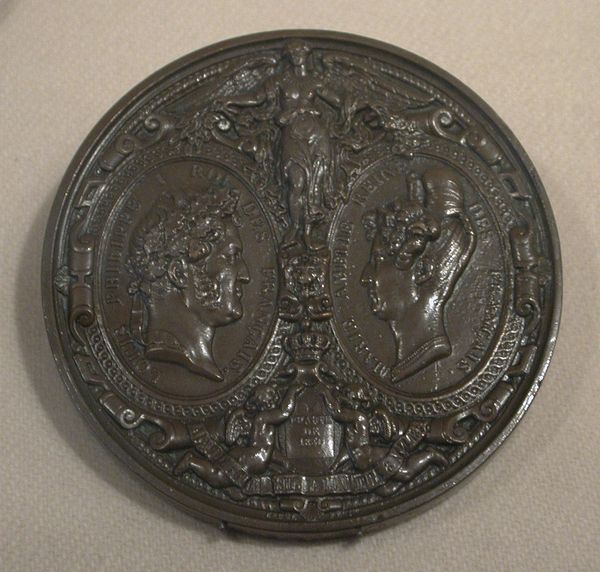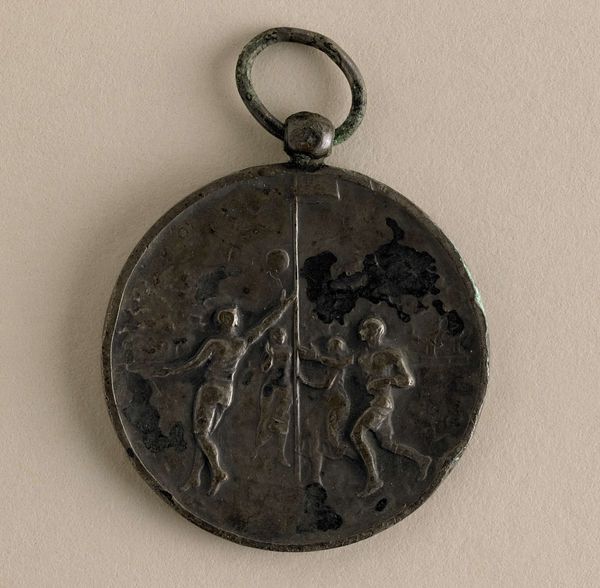
metal, bronze, sculpture
#
portrait
#
medal
#
baroque
#
metal
#
sculpture
#
bronze
#
sculpture
#
men
#
decorative-art
#
profile
Dimensions: Diameter (without pendant band): 45 mm
Copyright: Public Domain
Editor: Here we have an 18th-century bronze medal entitled "Francis I" by Georg Wilhelm Vestner. It's small and feels quite weighty, like it might have been someone's treasured possession. How do you interpret the imagery and symbolism in this piece? Curator: Medals like this one functioned as powerful mnemonic devices. This idealized profile, rendered in bronze, would have served as a potent, portable symbol of imperial authority and power. The inscription surrounding the portrait becomes part of that symbolic structure; it anchors the image to the identity of the sovereign. The medal then acts like a physical, tangible representation of the empire, carried perhaps to demonstrate loyalty, solidify status, or even serve as a sort of protective talisman. Does the visual style remind you of any historical era? Editor: It reminds me a little of the Baroque period because it's pretty elaborate. Curator: Yes, definitely! Note the curled wig and carefully articulated drapery: it's almost as though the artist is trying to imbue the emperor himself with all the qualities associated with the era—drama, movement and grandeur. Do you see any paradox in containing such ostentation within the limited space of a medallion? Editor: I think so, maybe because the frame reminds me how small and almost fragile it is as an object. The contrast makes it look important. Curator: Precisely. The intimacy of its size allows for private reflection and personal connection. It compresses vast political authority into a palm-sized token. I find it powerful how a seemingly simple object can hold layers of political, social, and even personal meanings. Editor: I never considered a medal being so multi-layered before. Thanks!
Comments
No comments
Be the first to comment and join the conversation on the ultimate creative platform.
